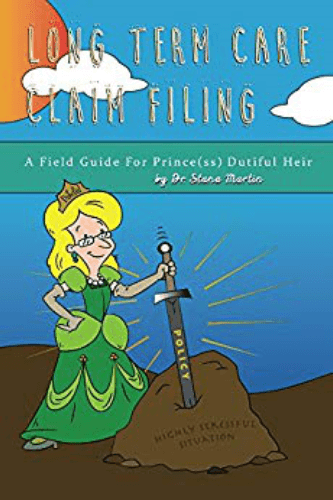2021 was a strange year in the long term care insurance world – driven mostly by the state of Washington.
Washington passed a one-of-a-kind tax in 2019 to create a distinct pool of money to pay for long term care (for residents of the state who have paid at least 10 years of this tax). Under the tax, W-2 employees in the state will pay .58% tax to the state. Or stated another way, for every $100 earned, you would pay $.58 to the state.
Once a tax-payer has paid this tax for 10 years, s/he will have access to a state-managed fund of money that will pay $36,500 for care in the state of Washington. It will pay out 365 “units” of $100 – in theory that could be $100/day for 365 days of care, or it could be $50/day for $730 days of care. It will pay for things like in-home care, nursing home care, hearing aids, training support for caregivers, memory care, and many other services according to the state’s website: WA Cares Fund website.
People who work in the state could opt-out of the program if they had a valid long term care policy in force by the deadline in November of 2021. As you can imagine, there was a deluge of applications in the state of Washington. Paying money towards a policy you can port with you when you move out-of-state is just far smarter than paying a tax you cannot take with you
So for companies and agents in Washington state, it was a crazy year. So crazy that many of the insurance companies had slow downs in processing applications all over the USA because of the press of Washington applications. Some of the companies even instituted minimum thresholds of premium for applicants from that state and ceased selling all together in the state for a short window in an attempt to control the flow.
As much of a debacle as this was, other states are looking at this program carefully and beginning discussion about how they might implement a similar tax. The problem is Medicaid budgets are strained. Medicaid – federally funded but state administered – is the last resort for folks who cannot pay for their own care. Once you are at poverty’s door, the state steps in and pays for your care. As the Boomers aged, Medicaid budgets began to groan under the load.
Washington’s tax is a clear move to try to create a new, separate pool of money that will provide at least a one year hedge before people apply to Medicaid for money to pay for care. This tax and its available pool of money is a far cry from true coverage for long term care.
The cost of care in Washington averages $200 to $300 per day today. Remember, the pool of money a resident can access is $100/day. If a person begins to pay the tax today, they may not need to tap the pool for care for 20 to 30 years. The cost of care in twenty years will double, however. So someone may think this new tax is covering them in the event of care, put it is a paltry sum compared to the care today and unmentionably low compared to the expected cost of care. Further, the younger you are as an employee, the more the math is not in your favor.
Let’s say you are 30 years old and earning $75,000 per year in Seattle area. Your tax is $435 per. So by the time this person retires – if there is no pay increase and no increase in the tax level – s/he will have paid over $15000 in taxes. If the person gets promotions with pay increases, they could easily pay more tax than they will ever get out for care. That same money would also have doubled or tripled if it had been invested.
So all in all, this tax is not the best solution for middle class folks. It definitely is not for higher income earning individuals. It might, however, be of help to the government as it will delay lower income earners applying to Medicaid for help paying for care.
Stana Martin, PhD, founded Mrs LTC to provide a top-quality resource for clients and customers who need help with long term care claims or insurance comparisons.
Questions?
Contact - Mrs. LTC
Long Term Care Claims & Insurance
Question about a Claim?
Shopping for coverage?








